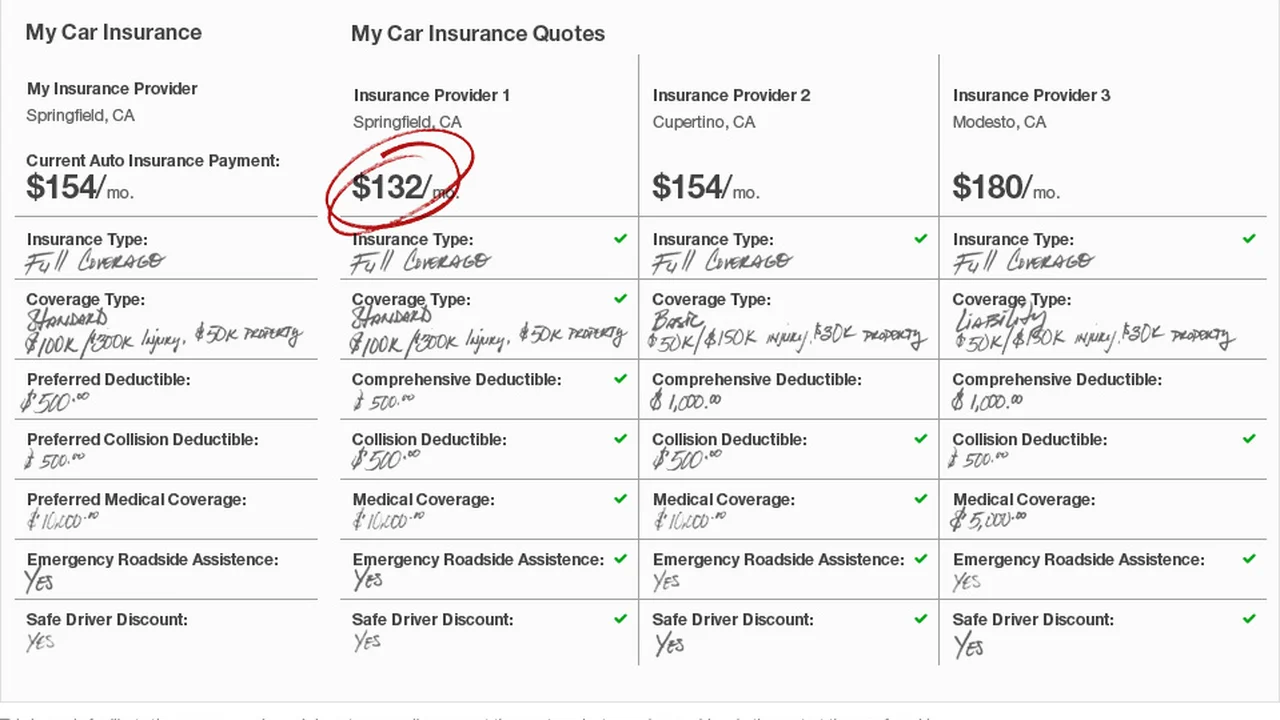Driving a Safe Car: Lowering Insurance Costs

Understanding the Link Between Car Safety and Insurance Premiums
Alright, let's talk about something that affects all of us car owners: insurance. You know, that necessary evil we all pay for, hoping we never have to use it. But did you know that the kind of car you drive can seriously impact how much you're shelling out each month? Yep, that's right. Insurance companies aren't just looking at your driving record; they're also checking out the safety features of your ride. The safer your car, the lower your risk, and the lower your insurance bill. Makes sense, right?
Think about it. A car with advanced safety features is less likely to be involved in an accident, and even if it is, the occupants are more likely to walk away unharmed. This translates to fewer claims for the insurance company, which means they're willing to give you a break on your premium. It's a win-win situation! So, what kind of safety features are we talking about? Buckle up, because we're about to dive in.
Key Safety Features That Can Lower Your Insurance Costs
Anti-lock Braking System (ABS) and Electronic Stability Control (ESC) for Enhanced Control
First up, we have ABS and ESC. These aren't just fancy acronyms; they're lifesavers. ABS prevents your wheels from locking up during hard braking, allowing you to maintain steering control. ESC, on the other hand, helps prevent skidding by automatically applying brakes to individual wheels when it detects a loss of traction. Together, they keep you in control even in slippery or emergency situations. Most modern cars come with these features standard, but it's worth checking when you're car shopping.
Airbags and Advanced Restraint Systems for Impact Protection
Next, let's talk about airbags. These inflatable cushions are designed to protect you in the event of a collision. Modern cars often have multiple airbags, including front, side, and curtain airbags, to provide all-around protection. Advanced restraint systems, like seatbelt pretensioners and load limiters, work in conjunction with airbags to minimize injuries. These systems tighten the seatbelt in the event of a crash and then gradually release tension to prevent chest injuries. They're like a gentle hug from your car when things get rough.
Lane Departure Warning (LDW) and Lane Keeping Assist (LKA) to Prevent Drifting
Ever drifted out of your lane without realizing it? LDW and LKA are here to help. LDW warns you when you're drifting out of your lane, while LKA actively steers you back into your lane. These features are especially helpful on long drives when you might be feeling a little drowsy. They can prevent accidents caused by distracted driving or fatigue. Think of them as your car's way of saying, "Hey, pay attention!"
Forward Collision Warning (FCW) and Automatic Emergency Braking (AEB) to Mitigate Collisions
FCW and AEB are like having a co-pilot who's always watching out for you. FCW alerts you when you're approaching a vehicle too quickly, giving you time to react. If you don't react in time, AEB automatically applies the brakes to prevent or mitigate a collision. These features can be real lifesavers in stop-and-go traffic or when someone suddenly cuts you off. They're like a safety net that's always there to catch you.
Blind Spot Monitoring (BSM) to Enhance Awareness
We all have blind spots, those areas around our car that we can't see in our mirrors. BSM uses sensors to detect vehicles in your blind spots and alerts you with a visual or audible warning. This can help you avoid accidents when changing lanes or merging onto the highway. It's like having an extra set of eyes watching out for you.
Backup Cameras and Parking Sensors for Safe Maneuvering
Backup cameras and parking sensors make it easier to maneuver in tight spaces and avoid hitting obstacles. Backup cameras provide a clear view of what's behind you when you're backing up, while parking sensors alert you when you're getting too close to an object. These features are especially helpful in crowded parking lots or when parallel parking. They can prevent fender benders and save you from the embarrassment of bumping into things.
Specific Car Models Known for Safety and Lower Insurance Rates
Okay, so now you know what safety features to look for. But what about specific car models? Some cars are known for their excellent safety ratings and, as a result, tend to have lower insurance rates. Here are a few examples:
Subaru Outback: A Top Safety Pick with Standard Safety Features
The Subaru Outback is consistently ranked as a top safety pick by the Insurance Institute for Highway Safety (IIHS). It comes standard with Subaru's EyeSight driver-assist system, which includes features like AEB, LDW, and adaptive cruise control. The Outback is also known for its excellent crash test performance and its all-wheel-drive system, which provides added traction in slippery conditions. It's a great choice for families who want a safe and reliable car.
Honda CR-V: A Popular SUV with Advanced Safety Technology
The Honda CR-V is another popular SUV that's known for its safety. It comes standard with Honda Sensing, a suite of safety features that includes AEB, LDW, and adaptive cruise control. The CR-V also has excellent crash test ratings and a spacious interior. It's a great choice for families who need a versatile and safe vehicle.
Toyota Camry: A Reliable Sedan with a Strong Safety Record
The Toyota Camry is a classic sedan that's known for its reliability and safety. It comes standard with Toyota Safety Sense, a suite of safety features that includes AEB, LDW, and adaptive cruise control. The Camry also has excellent crash test ratings and a comfortable ride. It's a great choice for commuters who want a safe and fuel-efficient car.
Volvo XC60: Renowned for its Safety Innovations
Volvo has always been synonymous with safety, and the XC60 is no exception. It's packed with advanced safety features, including Pilot Assist, which provides semi-autonomous driving capabilities. The XC60 also has excellent crash test ratings and a luxurious interior. It's a great choice for those who want a safe and stylish SUV.
Aftermarket Safety Products to Consider
So, what if you already have a car that doesn't have all the latest safety features? Don't worry, there are plenty of aftermarket products you can add to improve your car's safety.
Dash Cams: Documenting Accidents and Providing Evidence
Dash cams are small cameras that mount on your dashboard and record everything that happens in front of your car. They can be invaluable in the event of an accident, providing evidence to prove your innocence. Some dash cams also have features like lane departure warning and forward collision warning.
Product Recommendation: Garmin Dash Cam 67W. This dash cam offers a wide 180-degree field of view, excellent video quality, and features like automatic incident detection and voice control. It retails for around $250.
Usage Scenario: Ideal for daily commutes, road trips, and anyone who wants to have a record of their driving in case of an accident.
Blind Spot Mirrors: Expanding Your Field of Vision
Blind spot mirrors are small convex mirrors that attach to your side mirrors and expand your field of vision. They can help you see vehicles in your blind spots and avoid accidents when changing lanes.
Product Recommendation: Ampper Blind Spot Mirrors. These mirrors are easy to install and provide a clear view of your blind spots. They are adjustable and can be used on any car. They retail for around $10.
Usage Scenario: Perfect for drivers who have difficulty seeing their blind spots or who want to improve their overall awareness.
Backup Sensors: Adding Parking Assistance to Older Vehicles
If your car doesn't have a backup camera or parking sensors, you can add aftermarket backup sensors. These sensors use ultrasonic waves to detect objects behind your car and alert you with an audible warning.
Product Recommendation: eRapta ERT02 Backup Radar System. This system includes four sensors that can be installed on your rear bumper and a display that shows the distance to objects behind you. It retails for around $30.
Usage Scenario: Great for older vehicles that don't have backup cameras or parking sensors, making parking and maneuvering easier and safer.
Comparing Safety Features: Understanding the Differences
It's important to understand the differences between various safety features to make informed decisions about which ones are most important to you. Here's a quick comparison:
- LDW vs. LKA: LDW only warns you when you're drifting out of your lane, while LKA actively steers you back into your lane. LKA is more proactive and can be more helpful in preventing accidents.
- FCW vs. AEB: FCW only warns you when you're approaching a vehicle too quickly, while AEB automatically applies the brakes. AEB is more effective in preventing collisions.
- BSM vs. Rear Cross-Traffic Alert: BSM monitors your blind spots while you're driving forward, while Rear Cross-Traffic Alert warns you of vehicles approaching from the side when you're backing up. Both are helpful in preventing accidents in different situations.
How Insurance Companies Assess Safety Features and Vehicle Safety Ratings
So, how do insurance companies actually assess the safety features of your car and its overall safety rating? They typically rely on two main sources:
- Insurance Institute for Highway Safety (IIHS): The IIHS is an independent organization that conducts crash tests and evaluates the safety of vehicles. They assign ratings based on how well a car performs in various crash scenarios.
- National Highway Traffic Safety Administration (NHTSA): NHTSA is a government agency that also conducts crash tests and assigns safety ratings to vehicles. Their ratings are based on a five-star system.
Insurance companies use these ratings to determine the risk associated with insuring a particular vehicle. Cars with higher safety ratings typically have lower insurance rates.
Tips for Talking to Your Insurance Company About Safety Features
When you're shopping for car insurance, be sure to talk to your insurance company about the safety features of your car. Here are a few tips:
- Be specific: Don't just say your car has "safety features." List the specific features, such as AEB, LDW, and BSM.
- Provide documentation: If you have documentation that shows your car's safety ratings, such as IIHS or NHTSA reports, provide it to your insurance company.
- Ask for discounts: Ask your insurance company if they offer discounts for cars with specific safety features.
- Shop around: Get quotes from multiple insurance companies to find the best rate.
Maintaining Your Car's Safety Features: Regular Inspections and Maintenance
It's not enough to just have safety features on your car; you also need to maintain them properly. Here are a few tips:
- Get regular inspections: Have your car inspected regularly by a qualified mechanic to ensure that all safety features are working properly.
- Follow the manufacturer's recommendations: Follow the manufacturer's recommendations for maintenance and repairs.
- Replace worn parts: Replace worn parts, such as brake pads and tires, promptly.
- Keep your car clean: Keep your car clean, especially the sensors for safety features like AEB and BSM.
By taking care of your car's safety features, you can help ensure that they'll be there to protect you when you need them most, and potentially save you money on your insurance in the long run. Drive safe!
:max_bytes(150000):strip_icc()/277019-baked-pork-chops-with-cream-of-mushroom-soup-DDMFS-beauty-4x3-BG-7505-5762b731cf30447d9cbbbbbf387beafa.jpg)






